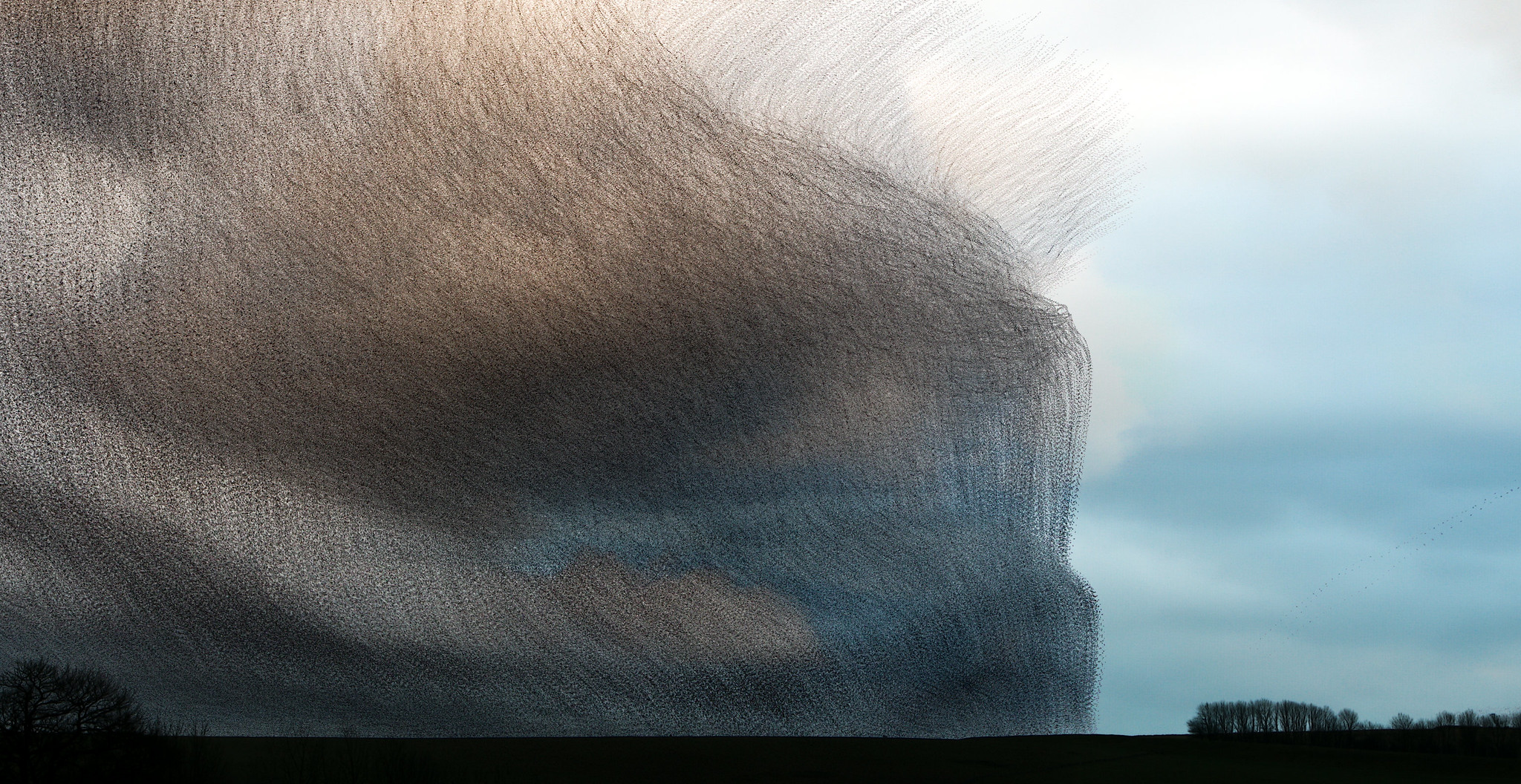.png)

To most of us, emergence means the process of becoming visible after being concealed. In many branches of science, it has a precise definition. It describes the way in which surprising behaviours and patterns arise in complex systems that cannot be predicted by looking at their component parts in isolation.
In essence, it is the interactions that are important.
From the molecular interactions that make up cells to societies and even galaxies, complex and emergent behaviour is all around us.
What makes flocks particularly fascinating is that the interaction network (how we describe which starling interacts with which) dynamically changes as the birds move relative to each other.
I have been thinking a lot about how the paths that the flock trace appear to look like a fluid. They sound remarkably like the crashing and surging of the ocean against the shore.
What initially presents itself as a gentle ebb and flow; a beauty to behold, reveals a nightly dance that is fundamental to their survival.
The eagle eyed observer will spot the predators amongst a million wings, but more likely you will first notice the ripples of their impact on the flock as it rises into a swell, whirling and sweeping before discharging its energy.
I cannot help but draw analogies to our own human flock, with disruptors, influencers and leaders in all their guises. How quick are we to note the direction in which we are being steered? And on which crest do we choose to ride?
I suggest that you put your feet up and lose yourself for a mindful 10 minutes.
It is best viewed with your volume on and the video quality set to 4K.
The Dynamics of the Flock
I am by no means the first person to become fascinated by these birds. For hundreds of years, many have pondered their remarkable synchrony. Often coinciding with majestic sunsets, they are much photographed, with newspapers eager to publish the latest photo of a murmuration in the shape of a whale, a hedgehog, or a giant bird.
While, without a doubt many of these images are charming, few evoke the presense of a hundred thousand individuals moving as one. I felt that there was creative space still open to convey the substance; the essence of a murmuration. At its core, what about a flock of starlings elicits such strong emotions? I reflected on this, and concluded that it is not the individual birds, nor a snapshot in time, but the fluid-like movement of the flock as a whole; the product of their interactions.
I have found that there is a skill in selecting the passage of time to display in order to create images with a balance between complexity and order; dynamism and stillness. These short videos give a glimpse into my creative process.
Dementor 2